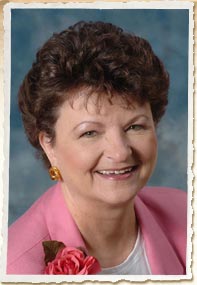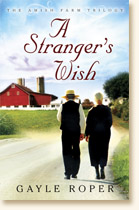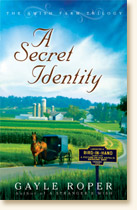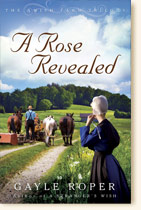An Interview With Gayle
Q: Gayle, you have written more than 40 books! That’s incredible! Did you initially plan to be an author, or did you work in other fields before writing?
A: I originally wanted to be a nurse. Then I did some candystriping my junior year in high school and realized I wasn’t made to be nurse, not at all. I was an English major in college and taught junior high English until we adopted our boys. I started writing as something to fill my time as a stay-at-home mom.
Q: When and how did your writing career actually begin?
A: Much as I loved our little guys, they weren’t the greatest conversationalists. After being with lots of people every day, home was quiet and I missed the mental stimulation. I’d always read extensively, so trying my hand at coming up with something I liked seemed natural to me. My first sale was a short story to a teen magazine based on an incident from my teaching days. I made ten whole dollars!
Q: How many hours a day do you spend writing?
A: I wish I could tell you I was disciplined and worked a given number of hours each day, but I’d be lying. All I can really say is that the closer to deadline, the longer my writing days. But a lot of writing isn’t typing. It’s thinking.
Q: Amish fiction has recently become very popular, but you actually wrote fiction with Amish themes more than 10 years ago. What is compelling to you as a writer about the Amish and their lifestyle?
A: We live right at the edge of Amish country. The closest farm is about three miles from us. So I’ve seen the Amish for years, and for a while I had a girl clean for me who was one step away from Amish. While her parents remained Old Order Amish, she said she was no longer Amish because she believed in salvation through grace.I am very impressed by their commitment to faith and family. The rest of us should do so well, whatever our theology.
Q: Give us a little introduction to The Amish Farm Trilogy. How would you describe this series?
A: When I began thinking about writing a book set in the Amish culture, I knew I didn’t want my viewpoint character to be Amish. It was a matter of not understanding their thought processes. My main character would have to be English, reacting to Amish life with both respect and disagreement. I based the paraplegic brother who comes home to live after his accident on folks we knew who remained Old Order but brought in phone and electricity for their paraplegic son. The idea of having the heroines rent the second floor of Jake’s part of the house came from wherever ideas come from.
Q: One of the themes of A Stranger’s Wish is art and its place in society. Why was this an important theme for you to explore?
A: I’ve known forever that the visual arts have no part in Amish life because there is no overt Christian usage for them. A picture may be a thing of beauty, but it doesn’t speak of biblical truth as a written article can. It also has no practical use like woodwork or quilts. When I found postcards that were prints of art done by an Amish woman, I was amazed. For years I wondered how she managed to be creative in a field frowned upon by her people and still remain Old Order.
Then I met her and learned she has come to the conclusion that God gifted her, and if He gifted her, she should use that gift. In A Stranger’s Wish, the Amish mother, Mary, is a closet artist who yearns for the freedom to pursue the gift God has given her. When her son rents his second floor to an artist, Mary dares to show her work. The theme isn’t so much art as it is stretching to be all God has gifted us to be.
Q:What is another important theme in this novel?
A: Another theme is choices and consequences. For Kristie, the heroine, taking the key given her by the stranger has ramifications. For Mary, showing her art to Kristie opens a door she’s kept firmly closed for years. For Jake, giving up and settling for his chair results in depresson and bitterness. For Mr. Geohagan, the stranger of the title, his decision about Jesus has eternal consequences. And for Kristie, her choice about the two men in her life will affect her as long as she lives. Choices should always be made with the consequences counted.
Q: Did you get any ideas for the plot or characters for this book from real life? And if not, how did you dream up the details for your mystery/romance plot ?
A: As I mentioned, I got the idea for Jake from real life, but the rest of the book is from my imagination. How I dream the stuff up is a mystery to me. It’s one of the things that makes the imagination so exciting. There are things, thoughts, ideas tucked away in the recesses of our minds and consciousnesses that we don’t even realize until they break through. Not that there’s anything new under the sun. It’s that things seem new when we have our wonderful “aha” moments.
Q: Tell us about yourself personally. What do you enjoy doing in your spare time? What’s something that might surprise people about you?
A: I’m a wife, a mom, and a grandmom. I’ve lived in the same house for most of my married life. I love reading mysteries and romantic suspense. I’ve been teaching writing at writers’ conferences for years and love the short bursts of intense energy required. Then I come home and collapse. The past few years are the first in my life without a pet. I dislike the telephone but love e-mail. I keep forgetting to go to my Facebook page because I don’t have anything interesting to say. I don’t have a favorite color but rather love combinations of colors. I love movies. I am very easily distracted. I love family get togethers because I love my family and extended family. I organize a silent retreat for my church’s women’s program every year. Chuck and I helped plant our church with 17 people. We are now about 2,000, very large for our area. I need to lose weight but don’t feel strongly enough to do much about it. Besides, if I got skinny, my wrinkles would show. I thank God He’s allowed me to be a writer because I can take the time to say what I want to say well, not as it would blurt out of my mouth.
Q: What is your number one goal with your writing?
A: That’s easy. It’s my mission statement: To write quality materials that point to the fullness of life in Christ and to teach others to find/do the same.






